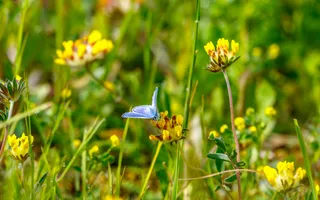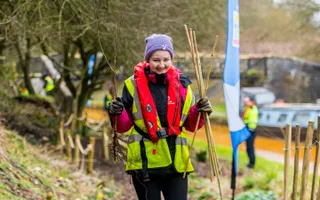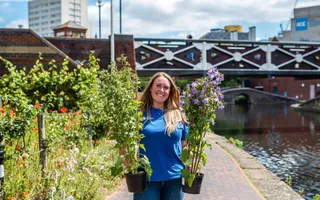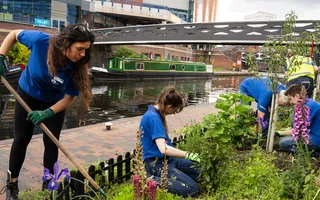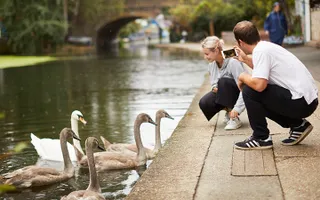The UK glories in 59 different species of this brightly coloured insect. Fifty-seven are resident species, and two are migratory species (the painted lady and clouded yellow butterflies).
Butterfly facts
Scientific name: Lepidoptera
Family: Papilionoidea
Diet: Nectar
Predators: Mammals, birds, spiders and other insects
Size: 2-9cm wingspan
Lifespan: Depending on the species, anywhere between two weeks to a year
Winged wonders of nature
Butterflies have existed for at least 50 million years and probably evolved around 150 million years ago. Their magical transformation from egg to caterpillar to chrysalis is one of nature's wonders.
Butterflies are important indicators of biodiversity and environmental health. Across the world, there are over 250,000 species, making up a quarter of all named species. Despite over 50 butterfly species residing in the UK, five kinds have gone extinct in the last 150 years.
Butterflies and our canals
To help combat populations declining, we've been working in partnership with Butterfly Conservation and local volunteers to improve habitats.
At places like Fenny Compton, on the Oxford Canal, and Napton Reservoir, we've planted banks with kidney vetch and creeping cinquefoil. This is an important food source for the grizzled skipper butterfly and the rare small blue butterfly.
What do butterflies eat?
While each species has a slightly different diet – some unsavoury, like the holly blue eating the juices of rotting fruits – most prefer sweet nectar from flowers. Butterflies have straw-like mouths (called proboscis), meaning they're mostly restricted to liquids.
They use their proboscis to reach nectar deep in the flower. Some butterflies aren't fussy about the flowers they feed from. Others prefer specific plants.
Nectar-rich flowers like bluebells, lavender, red campion, cornflowers, primrose and clover are all butterfly favourites. Spring blossom, ivy, hawthorn, holly, bramble and nettles also attract butterflies. The abundance of wildflowers and vegetation is one of the reasons we see so many along our canals.
How do butterflies breed?
Butterflies have a unique four-stage life cycle. They start as tiny eggs laid on leaves in which the larvae (or caterpillars) form. Eggs can hatch after a few weeks or remain dormant for over winter before emerging.
Once hatched, caterpillars vary in size, shape and colour depending on the species. Some are furry, some spiky, some camouflaged, some smooth. All caterpillars love to eat. They munch their way through large amounts of green leaves to store energy for their next phase: the chrysalis.
The chrysalis (or pupa) stage of a butterfly's life cycle sees it transformed from a shuffling caterpillar to a free-flying butterfly. The caterpillar surrounds itself with a protective case, anchoring itself to a plant.
Finally, the insects emerge from their cocoon as fully formed butterflies. They're ready to find a mate and start the process all over again. At this stage, some butterflies will travel thousands of miles to breed.
Where do butterflies live?
Butterflies make their homes anywhere from woodlands and grasslands to hedgerows and scrubland. Sunny sheltered areas are good places to find butterflies. You might also see them feeding on brambles in the summer.
Tips to spot butterflies
Choose an overcast day to see them up close as they're less active and stay still for longer. Head to your local canal or river and keep an eye on their favourite flowers or watch the bramble and nettles.
Threats to butterflies
It's always a pleasure to see different and vibrant butterflies feeding along our towpaths. Butterflies inspire images of sunshine and flowery gardens. However, many species are under threat from habitat loss and degradation.
In fact, one in ten species of butterfly faces extinction in Europe. Over a third have declining populations. Several UK species are now listed in the UK Biodiversity Action Plan. Butterflies are fragile creatures and react quickly to change. Their decline is more serious than a loss of colour in the countryside.


